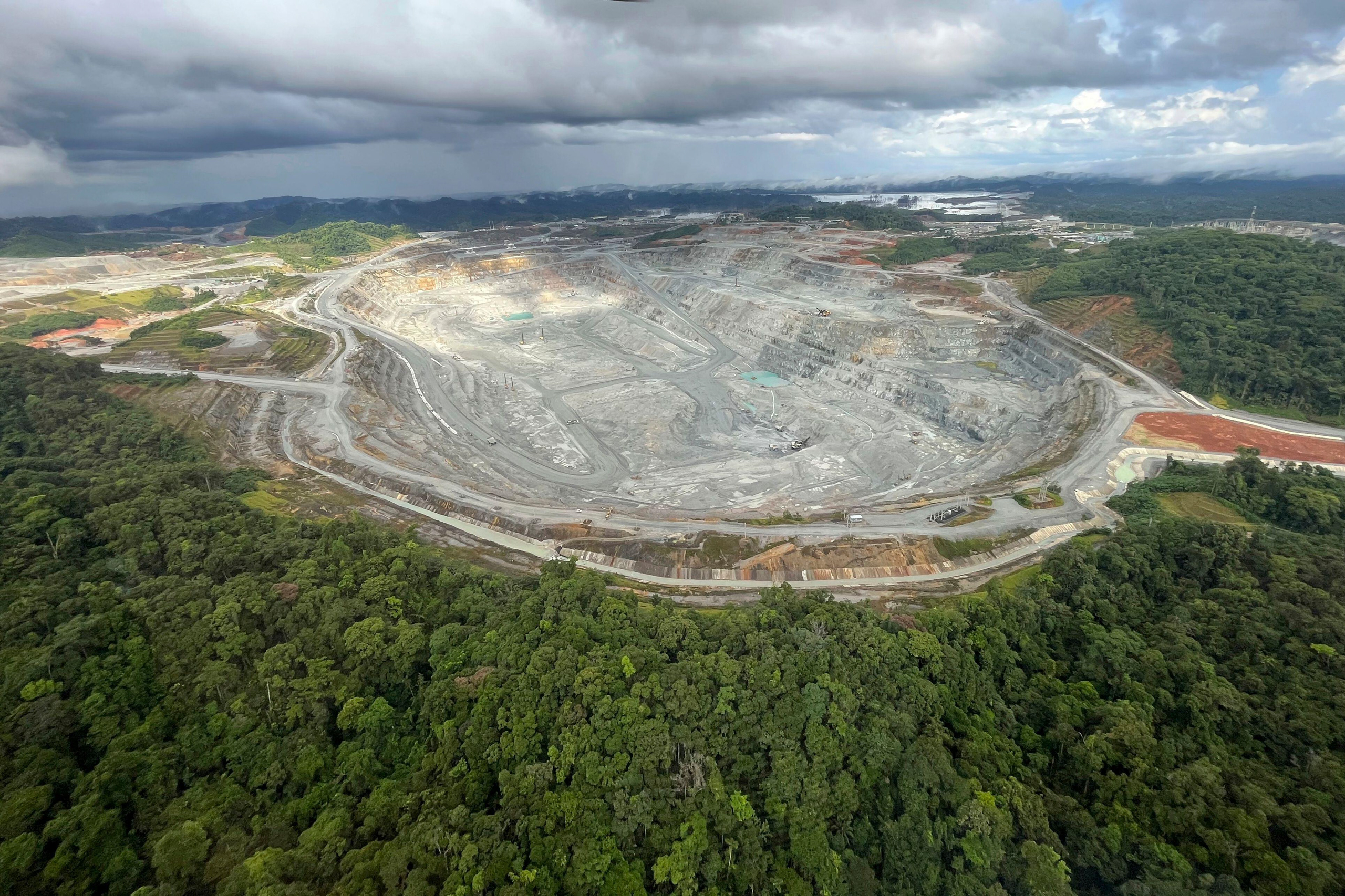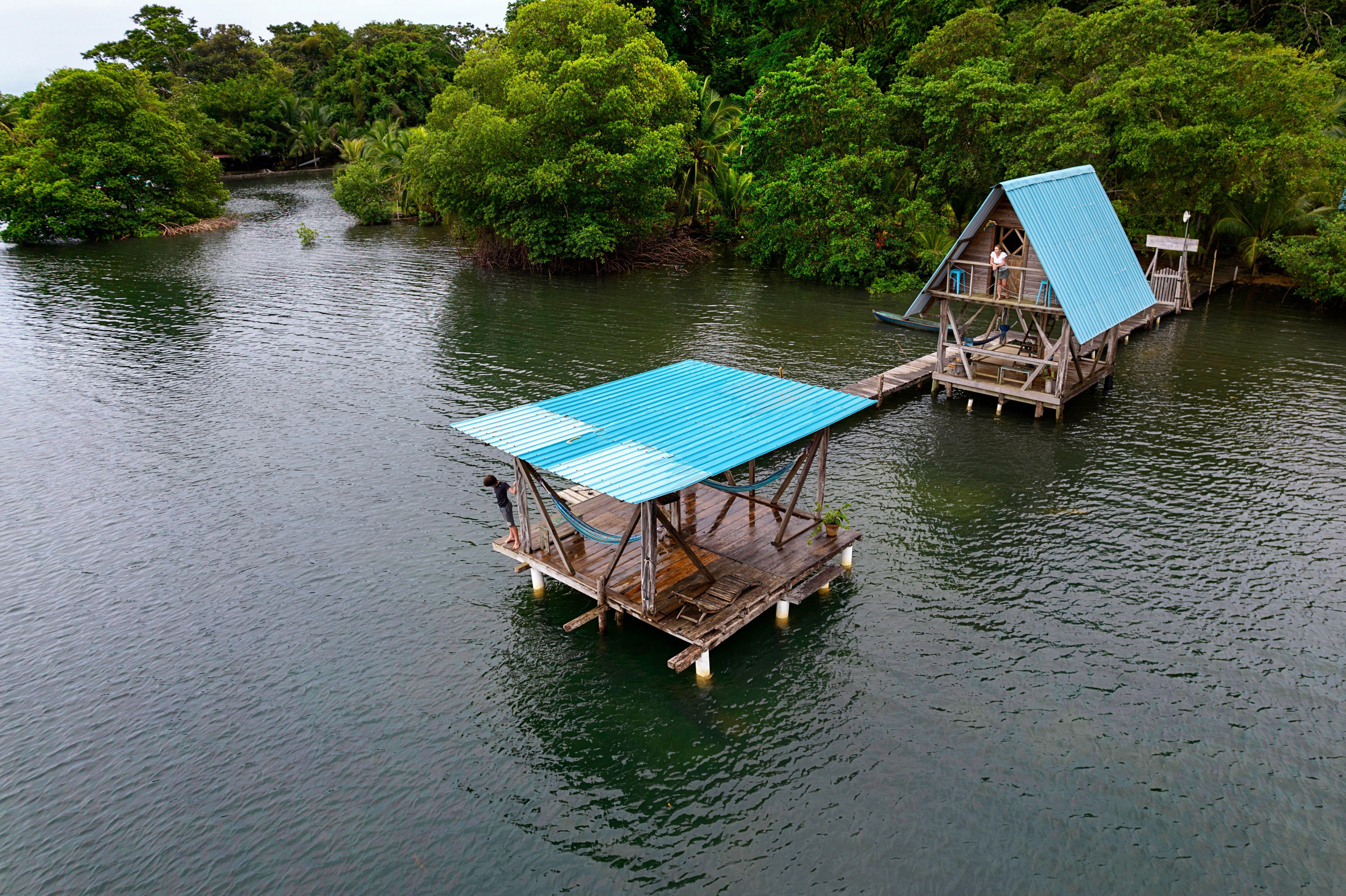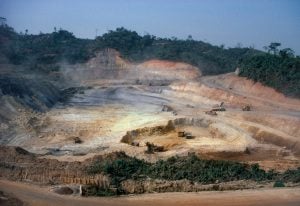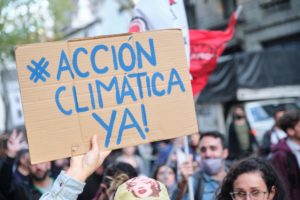Panama will hold its presidential elections on 5 May, months after huge protests saw thousands descend on the country’s streets and ultimately help to force the closure of Central America’s largest copper mine.
The issue has featured in debates among the leading candidates: centre-right frontrunner and former minister José Raúl Mulino; former president Martín Torrijos (2004-2009); former foreign secretary Rómulo Roux; and lawyer and independent Ricardo Lombana. Some commentators have dubbed the Cobre Panamá mine as “another candidate” in the elections, such is its economic and political importance for the country.
Since the government’s historic ruling in November to shutter the mine, it has been estimated that closure could take more than nine years and cost approximately USD 800 million. Questions have been raised over the impact the decision will have for Panama’s economy, having turned its back on an activity that represented 3% of its GDP, Panamanian economist Felipe Argote told Dialogue Earth. Estimates from First Quantum, the Canadian company that has owned the mine since 2013, put this figure as high as 5%.
Others warn about the actions that must be taken to prevent further environmental damage after the closure, given previous experiences at the country’s Remance, Santa Rosa and Molejón gold mines. After their closures, the presence of cyanide, a chemical that can compromise human health and ecosystems, was detected in nearby water sources.
Candidates’ statements about the mine could prove decisive in the elections. Most have pledged to respect the ban on new mining concessions that was enacted in November in response to the wave of protests, which broke out after the government had initially approved a new contract with First Quantum. Only two candidates – current vice-president José Gabriel Carrizo, of the ruling Democratic Revolutionary Party, and the independent candidate Melitón Arrocha – left the door open for a potential popular vote to decide whether the ban on mining should be upheld.
As polling day nears, Dialogue Earth takes a closer look at the background of the Cobre Panamá mine, the possible consequences of its closure and the road ahead.
What happened to the mine? The environmental context
The Cobre Panamá mine is located in the central province of Colón, 120 km west of Panama City, and at the heart of the Mesoamerican Biological Corridor, a migratory bridge for hundreds of species that stretches from Colombia to Mexico. In 2023, 330,863 tonnes of copper were extracted at the mine, First Quantum reports.
Concerns over the environmental impacts of the mine, which had been in operation since 2019, were one of the key issues that led to last year’s protests.
In 2021, local newspaper La Prensa published an investigation in which it alleged 209 breaches of the obligations established in the mine’s environmental impact study by First Quantum’s local subsidiary, Minera Panamá. The company reportedly neglected mitigation measures, affecting water sources in an area crossed by several rivers. In at least two of them, the Caimito and Botija rivers, authorities recorded impacts on aquatic life.
The company itself acknowledged impacts on over 3,000 hectares in the area due to “mining activities”, although it claims to have reforested 4,200 hectares as part of its mitigation plans. But Joana Ábrego, legal manager of the Environmental Advocacy Centre Panama (CIAM), a local NGO, told Dialogue Earth that the project’s footprint could be as large as 20,000 hectares, if facilities that service the mine such as the Punta Rincón port, among others, are included in its area of influence.
On 20 October 2023, despite public discontent over the environmental impact of the mine and following weeks of political debates, President Laurentino Cortizo signed into law the contract that would have permitted the mining company to exploit the copper for a further 20 years. This proved to be the trigger for widespread protests, during which many of the country’s major roads and ports such as Punta Rincón were blockaded.
After weeks of demonstrations, in November Panama’s Supreme Court ruled that the contract award had violated the country’s constitution, including articles regulating the procedure for approving public contracts. In addition, excessive benefits were said to have been granted to the contractor and were contrary to environmental legislation – in other words, that the interests of the state had been subordinated to those of the mining company. Soon after, First Quantum announced its intention to dispute the decision in international courts.
A complicated exit
Both First Quantum and the authorities have said the closure of the mine will present numerous challenges. A report published by the company in February noted that Panama would be “the first country in the world to implement a sudden closure of a mine of this magnitude”, and that the process could take over a decade. The company reports that maintenance of the shuttered mine is currently costing it between USD 15 million and USD 20 million each month, and that some 1,400 workers are involved in activities to stabilise the site.
Looking forward, Ábrego is concerned over the risks posed by the pit where mining has taken place, and that as long as it remains open and exposed to the elements, it is in an “ecologically sensitive area”, with rivers and groundwater sources that could be affected. Another danger she highlights is possible seepage of material from the mine’s tailings ponds, similar to cases reported following the closure of the Santa Rosa and Molejón gold mines.
One of First Quantum’s proposals to finance the safeguarding plan is to sell 121,000 tonnes of copper concentrate that is currently in storage in the country. This is material that has already been extracted and whose prolonged storage on site has been highlighted as a risk to the environment due to contamination by “dangerous gases”. Executives from the company have reportedly discussed the sale of the copper to Chinese company Jiangxi Copper, which owns an 18% stake in the Canadian firm.
First Quantum’s report warned that an extended shutdown would put its ability to meet its “financial covenants” in jeopardy. The situation is complicated further by the international arbitrations launched by the transnational firm and its partners against Panama.
One possible way out, according to Argote, could be for the state to acquire control of shares in the mine in exchange for desisting from any legal action. The creation of a “mixed company” had already been contemplated in a 1967 cabinet decree, which established a “special regime” for the area occupied by the current concession. It is an option that could put an end to questions about possible infringements of Panama’s sovereignty in relation to the mine, a concern raised by protesters and the supreme court’s ruling.
However, Harley Mitchell Moran, a Panamanian lawyer who has worked on cases against companies for environmental breaches, said that reaching an agreement would only be possible “as long as it is lawful, public and considers the national interests at stake, such as a healthy environment.”
Dialogue Earth requested an interview with a representative of Minera Panamá, but no response was received. The Ministry of Commerce and Industry, one of the entities in charge of overseeing the Cobre Panamá mine’s management, was also approached for comment, but at the time of press no response had been received.
Economy faces mining hangover
With investments of USD 10 billion made over a decade, 7,000 employees currently suspended, and the mine’s output accounting for over 75% of Panama’s exports, the numbers around Cobre Panamá and its closure are presenting serious headaches for decision-makers and business figures.
However, since the banning of mining concessions in November, both environmentalists and economists have pointed towards the potential for alternative, non-extractive industries, which they say can create deeper roots in the country.
Argote highlights the successes of Panama’s construction and logistics industries. Low-impact eco-tourism could present another option: last year alone, the tourism industry reportedly generated more than USD 900 million in revenue for the country.
Despite the hit to the Panamanian economy from the mine’s closure, the country’s GDP is still expected to grow by more than 2% this year, which would make it one of the strongest markets in the region.
On the export side, following the halt in shipments from the Punta Rincón port last November, bananas replaced copper as Panama’s main export, according to data for the first two months of the year from the Ministry of Commerce and Industry. China, which was the main destination for copper, moved from first to ninth place among the top export partners.
There can be no ‘clean’ energy with materials that affect species and human lifeJoana Ábrego, legal manager of the Environmental Advocacy Centre Panama
Copper supplies a global market in transition to green energy, a growing business in the region. In the global supply chain of the strategic minerals needed to decarbonise economies, Panama is currently something of a missing link. But, Ábrego warns: “There can be no ‘clean’ energy with materials that affect species and human life.”
The closure of the mine, as a result of protests in which young people took centre stage, represents an opportunity to restore the “violated legal order” and to finally respect environmental norms, Mitchell Moran says.
Should the next president-elect and government decide that the mining industry does have a future in Panama, they will not have it easy: it will no longer just be a matter of promoting, negotiating, and approving new contracts – they will first have to convince a new generation that their administration is environmentally conscious and concerned about respecting the rule of law.
Panama’s general election will be held this Sunday, 5 May, with recent polls putting José Raúl Mulino in the lead. However, several public figures are calling on the country’s supreme court to issue a ruling on his candidacy ahead of the vote. Mulino was a late replacement for former president Ricardo Martinelli (2009-2014) – disqualified from running in March due to a conviction in 2023 for money laundering – and some have suggested his promotion from vice-presidential to presidential candidate was unconstitutional.
As for First Quantum, the company has said it will likely not be able to export its stored copper concentrate from the country until after the election is decided; its prospects of mining in the country again are seen as unlikely, whatever the result.











